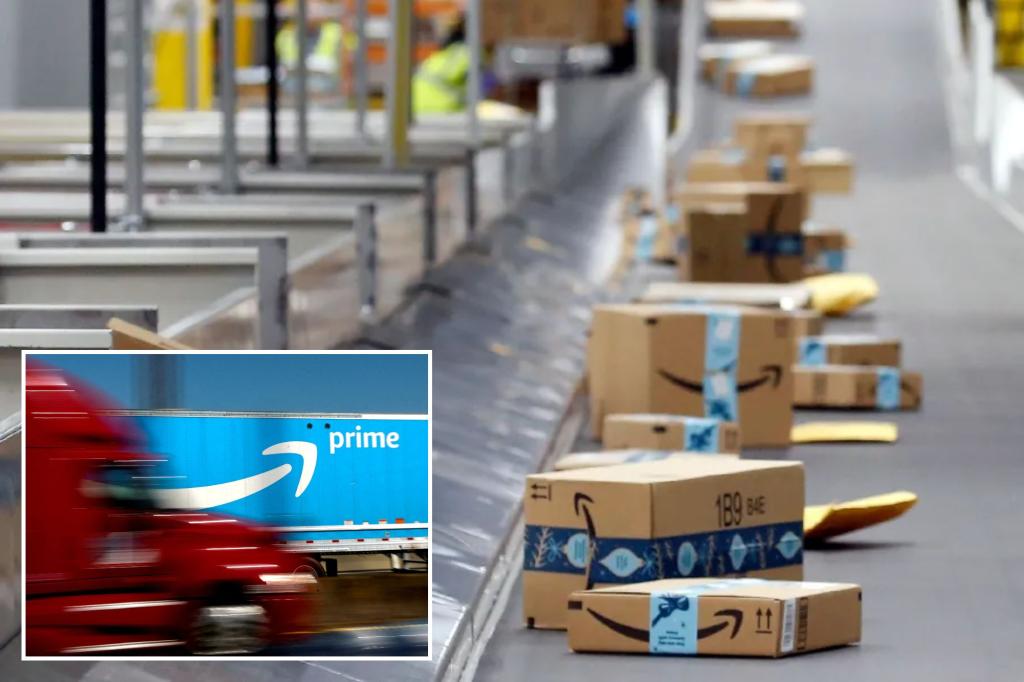Amazon will likely see a boost in consumer spending during its Prime Big Deal Days as cash-strapped consumers — also jittery over last week’s strike at US ports — pounce on deals early and often, according to experts.
Amazon’s Prime Big Deal Days – also known as the October version of the Prime sale – will take place Tuesday and Wednesday. The 48-hour sale is similar to Prime Day in July and offers a wide range of deals and discounts on various products exclusively for Amazon Prime members.
While Amazon doesn’t release specific sales numbers from its Prime events, business is expected to increase compared to last year.
“People are looking for deals because the economy isn’t as good as it was,” Jay Kamhi, creator of the Mr. Predicto fortune-telling toy and president of Amazon toy-seller Kamhi World, told The Post.
The historic port strikes — ended late Thursday via a tentative agreement between dock workers and port employers — had threatened to hit Amazon by causing shortages and price hikes akin to the economic turmoil seen during the pandemic.
But Amazon and other large retailers – which have stockpiled in anticipation of the strikes – would not feel an impact in at least a month, whereas smaller retailers would struggle with shortages in just a few weeks, SMI Group CEO Kenin Spivak told The Post.
Nevertheless, experts advised consumers to start their holiday shopping sooner this year in case of potential supply chain disruptions.
“Since they’re not buying perishables, I don’t think it really harms the consumer to do their shopping now, put their toys in the closet and then wrap them when Christmas comes around,” Spivak told The Post.
He also warned, however, that it’s a double edged sword: If consumers start their shopping sooner, there will be shortages sooner.
About two-thirds of container shipments – including goods like clothing, furniture, toys and electronics – arrive through East Coast ports, Spivak told The Post.
West Coast ports – which are already at top capacity ahead of the busy season – are taking on significant reroutes.
“Most manufacturers have been watching the developments of the strike for months and have contingency plans that focus on the West Coast ports,” Hitha Herzog, chief research officer at H Squared Research and part-time faculty at Parsons School of Design, told The Post.
The last minute re-routes could increase costs by about 15% or 20%, but companies will likely absorb these costs, Herzog said.
The more significant fees will come from transporting those new West Coast imports to the East Coast via trains and trucks, Spivak told The Post.
However, Amazon seems to be in the clear since the strikes ended after three days and large retailers had ordered at least a few weeks’ worth of stock in anticipation of the strikes, experts said.
Consumers will likely use the Prime event to get some holiday shopping done early, as well as stock up on Halloween decorations, Kamhi told The Post.
Smaller home and kitchen appliances are another popular choice during the Prime event, Kamhi said.
The beauty and electronics categories – chock full of popular gifts – will likely see a sales boom as well, Evolved Commerce co-founder Gabe Ray told The Post.
Most customers will likely wait to purchase larger items – like furniture and more expensive holiday gifts – during the traditional Black Friday and Cyber Monday sales, Ray said
The average spend per order during the Prime Big Deal Days in 2023 was $55.86, according to a Numerator report.
The average household spend during the sale was $108.86, the report said.
About 28% of Prime Big Deal shoppers said they purchased holiday gifts during last year’s sale, and almost a third of shoppers said they finished at least half of their holiday shopping during the sale, the report said.
About 6% of households shopping during the sale placed at least five orders in the first 30 hours of Prime Big Deal Days, the report said.
Amazon is also still experiencing a trend of consumers shifting to online retailers after a boom in online shopping during the pandemic, according to Ray.
“The shift from brick-and-mortar to online shopping continues to grow,” Ray told The Post.
Despite economic influences like long-lasting inflation, consumers continue to spend more money on Amazon each year, Ray said.
Amazon has gained customers by improving its convenience factor with more same-day delivery options.
While online shopping was previously seen as a fad among younger generations, “more and more people of older generations are adopting it and accepting online shopping is easier,” Ray told The Post.



